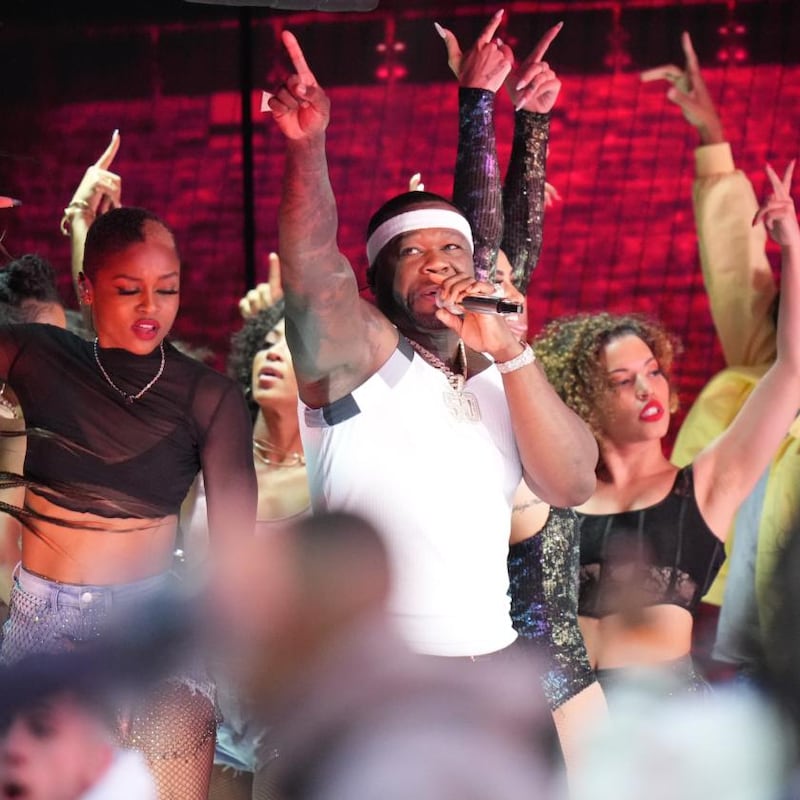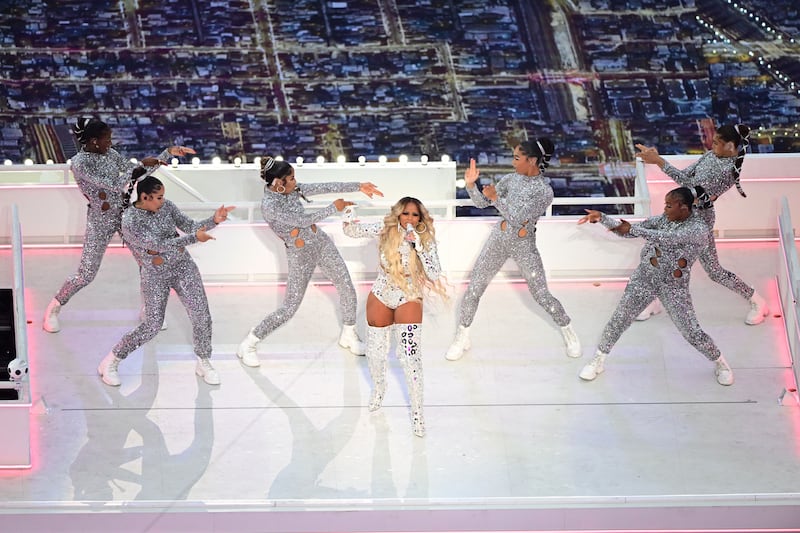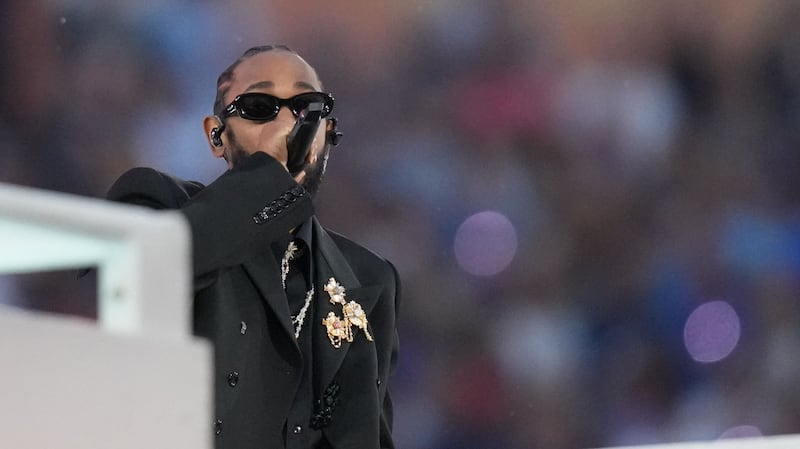Leading up to Sunday’s Super Bowl halftime show, much ado was made over the fact that this would be the first year that hip-hop occupied the centre of the concert. It was marketing copy that overlooked the glaring lateness of the achievement – that rap was finally getting the spotlight in perhaps the 20-somethingth year of hip-hop occupying the centre of American pop music. Does progress this delayed still count as a breakthrough?
After several years of grappling with an assortment of racial controversies, the US National Football League (NFL) likely wanted credit for showcasing Black music – especially hip-hop, the lingua franca of American pop culture – this prominently. What would some of rap music's generational superstars – Dr Dre, Eminem, Snoop Dogg, Kendrick Lamar – titans with little fear for their reputations, do with this most visible of platforms?
The stories told on the SoFi Stadium field in Los Angeles on Sunday night were multilayered, a dynamic performance sprawling atop a moat of potential political land mines. In the main, there was exuberant entertainment, a medley of hits so central to American pop that it practically warded off dissent.

Dr Dre opened up the performance behind a mock mixing board, a nod to the root of his celebrity: the ability to mastermind sound. For the next 12 minutes, vivid and thumping hits followed, including The Next Episode, a wiry collaboration between Dr Dre and Snoop Dogg, wearing a blue bandanna-themed sweatsuit; California Love (mercifully, delivered without a hologram of Tupac Shakur, as some had rumoured); Eminem's stadium-shaking Lose Yourself; Lamar's pugnacious and proud Alright; and a pair of songs from Mary J Blige, the lone singer on the bill.
50 Cent, hanging upside down from the ceiling of the set, was an unannounced guest, performing his breakout hit In Da Club, one of Dr Dre’s seminal productions. (This was almost certainly the most bleeped halftime show ever.)
The performances were almost uniformly excellent. Lamar was stunning – ecstatically liquid in flow, moving his body with jagged vigor. Snoop Dogg was confident beyond measure, a veteran of high-pressure comfort. Eminem, insular as ever, still emanated robust tension. Blige was commanding, helping to bring the middle segment of the show into slow focus with a joyous Family Affair and No More Drama, rich with purple pain. And Dr Dre beamed throughout, a maestro surveying the spoils of the decades he spent re-orchestrating the shape and texture of pop.

But the true battles of this halftime show were between enthusiasm and cynicism, censorship and protest, the amplification of Black performers on this stage and the stifling of Black voices in various stages of protest against the NFL. Just a couple of weeks ago, the NFL was sued by former Miami Dolphins head coach Brian Flores, who said he had faced discriminatory hiring practices.

This halftime show, which scanned as an oasis of racial comity if not quite progressivism, was the third orchestrated as part of a partnership between the NFL and Jay-Z's entertainment and sports company, Roc Nation, that was struck in the wake of the kneeling protests spawned by Colin Kaepernick in 2016.

“It’s crazy that it took all of this time for us to be recognised,” Dr Dre said at the game’s official news conference last week, underscoring that the NFL essentially chose to wait until hip-hop had become oldies music – apart from Lamar, every artist onstage Sunday had their commercial and creative peak more than a decade ago – in order to grant it full rein on its biggest stage.
The NFL is notoriously protective of its territory, and mishaps at the halftime show – Janet Jackson’s wardrobe malfunction, M.I.A.’s middle finger – have tended to cause outsized public brouhahas. Halftime may well be one of the last stages in the US where hip-hop still feels like outsider music, amplifying the sense that the interests of the league and of the performers might not have been fully aligned.
This year's event also took place in South Los Angeles, just 20 minutes west of Compton, where Dr Dre was a founder of N.W.A, one of the most important hip-hop groups of all time, godfathers of gangster rap and agit-pop legends. Compton was embedded into the stage setup: the buildings included signs for its various landmarks, including Tam's Burgers, Dale's Donuts, and the nightclub Eve After Dark, where Dr. Dre used to perform with his first group, World Class Wreckin' Cru. The dances, from Crip-walking to krumping, were Los Angeles specific. Three vintage Chevrolet Impalas served as visual nods to lowrider culture. Lamar performed his segment atop a massive aerial photograph of the city.

Each of those nods felt salient and potent, a way to make this impossibly global event feel deeply local. But it wasn’t clear if the renegade political spirit that was a hip-hop hallmark when Dr Dre was still a member of N.W.A would also make an appearance during the show.
A few hours before the game began, Puck News reported that Eminem, the show’s lone white performer, had proposed taking a knee during the set, and was denied by the NFL. It had the feel of a pre-manufactured controversy, the sort of leak engineered simply to be refuted.
And so there was Eminem, rapping "Opportunity comes once in a lifetime" at the end of Lose Yourself, putting his right hand to his head, and dropping down on his left knee while Dr Dre sat at a white piano and tapped out a melody familiar from Tupac's I Ain't Mad at Cha – a flash of radicalism and a jolt of elegance, a pushback and an embrace, an implicit raised fist and a wink. And after the show was over, an NFL spokesperson said that the league knew all along that Eminem would kneel. Is it still protest if it's been signed off on and approved? – This article originally appeared in the New York Times.











